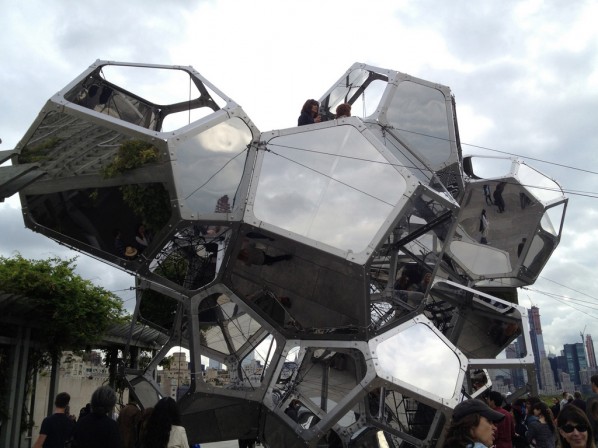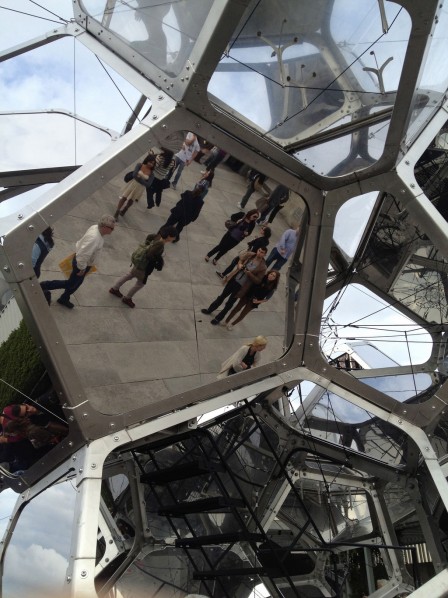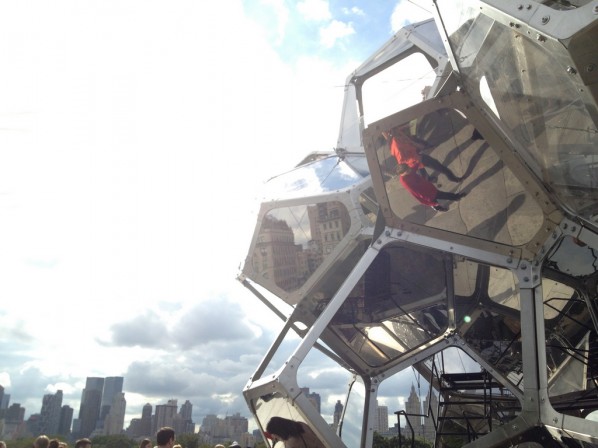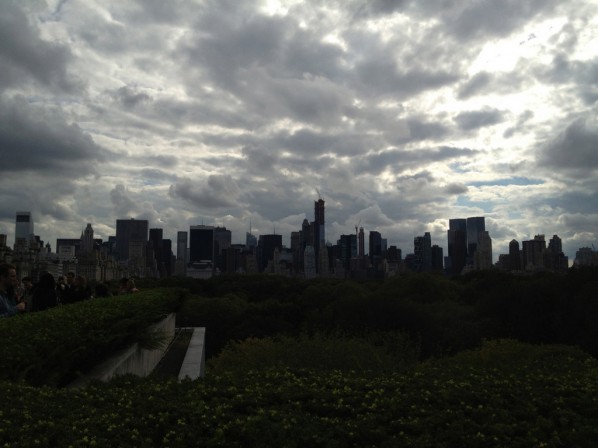
Tomás Saraceno on the Roof Cloud City 01; Steel, acrylic, and polyester. Lent by Christian Keesee. Photo by Chen Tianchan
May 15- November 4, 2012 (Weather permitting)
The Iris and B. Gerald Cantor Roof Garden
This site-specific installation for the 2012 season of the Iris and B. Gerald Cantor Roof Garden features the work of?Tomás Saraceno (born Tucuman, Argentina, 1973), known for the unfettered invention of his explorations. Cloud City is a constellation of sixteen interconnected multipolygonal modules linked in a nonlinear configuration. Alive with ever-changing mirrored effects and punctuated by several webbed satellite-like forms made of polyester cord, the work is constructed primarily of highly reflective and transparent materials. The project draws on principles of architecture and engineering physics and chemistry, aeronautics, social interaction, and the natural world. Its structure and components are inspired by complex fractal patterns, clouds, bubbles. Spiderwebs, and neural and communication networks. This innovative, forward-looking, visionary endeavor is the fifteenth installation of a solo artist’s work on ROOF garden.


Over the past decade Saraceno has constructed habitable networks based on organic forms, naturally occurring geometries, and interconnectivity that merge art, architecture, and science. His multidisciplinary project Cloud Cities/Air Port City is rooted in an investigation of how to expand the ways in which we inhabit and experience our environment. Originally trained as an architect, Saraceno uses his art to envision floating or flying cities that defy traditional notions of space, time, and gravity. He changes the boundaries of earthbound living and explore the possibility of utopian airborne habitation, looking to the atmosphere, rather than terra firma, for inspiration. Cloud City is the largest, most recent, and most ambitious work in the Cloud Cities/Air Port City series and is the artist’s first major commission in the United States.
Saraceno considers Cloud City as a viewing platform and access point to the cosmos, functioning as a vehicle to capture and stimulate our imaginations, “ready to transport visitors beyond our usual social, political, and geographical states of mind.” It affords the opportunity for participatory interaction and social exchange.


Visitors may view, walk around, and experience Cloud City from the Roof Garden level. Alternatively, a limited number at a time may enter and walk through the habitat-like modular structures on an internal route of staircases, walkways and platforms to explore the sculpture’s interior realms and exterior vistas from as high up as twenty feet above the ROOF garden.
Saraceno studied art and architecture in Buenos Aires, Frankfurt, and Venice and attended the Space Studies Program of the international Space University at NASA’s Ames Research Center in California. His work has been exhibited internationally for more than a dozen years and is included in public and private collections in the United States and abroad. The artist lives and works in Frankfurt-an-Main, Germany.
Cloud City, 2012, Steel, acrylic, and polyester. Lent by Christian Keesee.
The Exhibition is made possible by Bloomberg
Additional support is provided by Cynthia Hazen Poisky and Leon B. Poisky.
The Daniel and Estrellita Brodsky Foundation. William S. Lieberman Fund, and Eugenio Lopez.
(Reporting and photo by Chen, Tianchan, US Correspondent)
Courtesy of the artist and The Metropolitan Museum of Art, for further information please visit www.metmuseum.org.




























